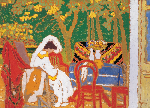Modernist endeavors of Hungarian painting in the first half of the 20th century – In the Gábor Kovács Art Collection
National Museum of Bulgarian Fine Arts (National Art Gallery of Bulgaria)

Continuously enlarged, the Gábor Kovács Art Collection is one of the most prestigious private art collections in Hungary. Following several exhibitions in Hungary, the Sofia display is the first occasion when a special selection from the collection has been presented abroad, one that guides the visitor through what was probably the most exciting half a century in the history of Hungarian painting.
In those decades from the end of the 19th century till the Second World War, Hungarian art developed almost in parallel with the painting of Western Europe, particularly of France and Germany. The period saw the emergence of the realistic approach, the success of French Impressionism, and then, from the beginning of the 20th century, the flourishing of different isms (Fauvism, Cubism, Expressionism, Constructivism). Following the traumatic experience of World War One, European artists were in search of new forms of expression, and the Hungarians were no exception. Despite the considerable differences in the political, social and economic conditions of the European nations in these decades, cultural relations helped the arts, painting included, to maintain the spiritual union of the continent—something this exhibit also bears a beautiful testimony to.
National Museum of Bulgarian Fine Arts
1 Knyaz Alexander I Sqr., 1000 Sofia, Bulgaria
Национален Музей на Българското Изобразително Изкуство
гр. София 1000, пл. "Княз Александър I" №1, България
